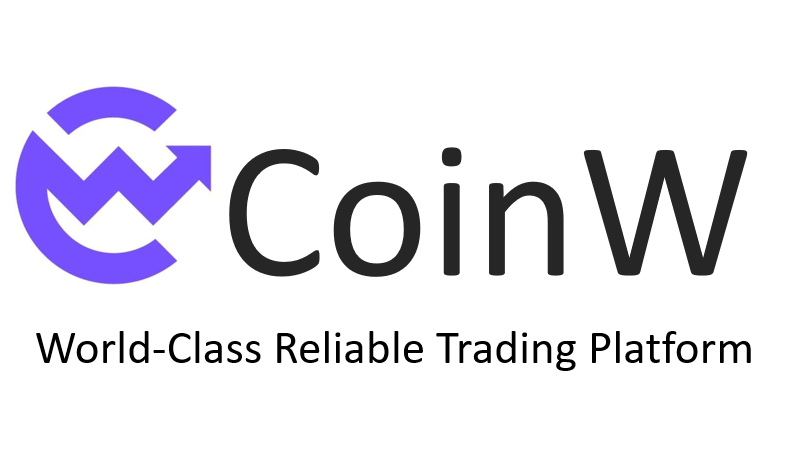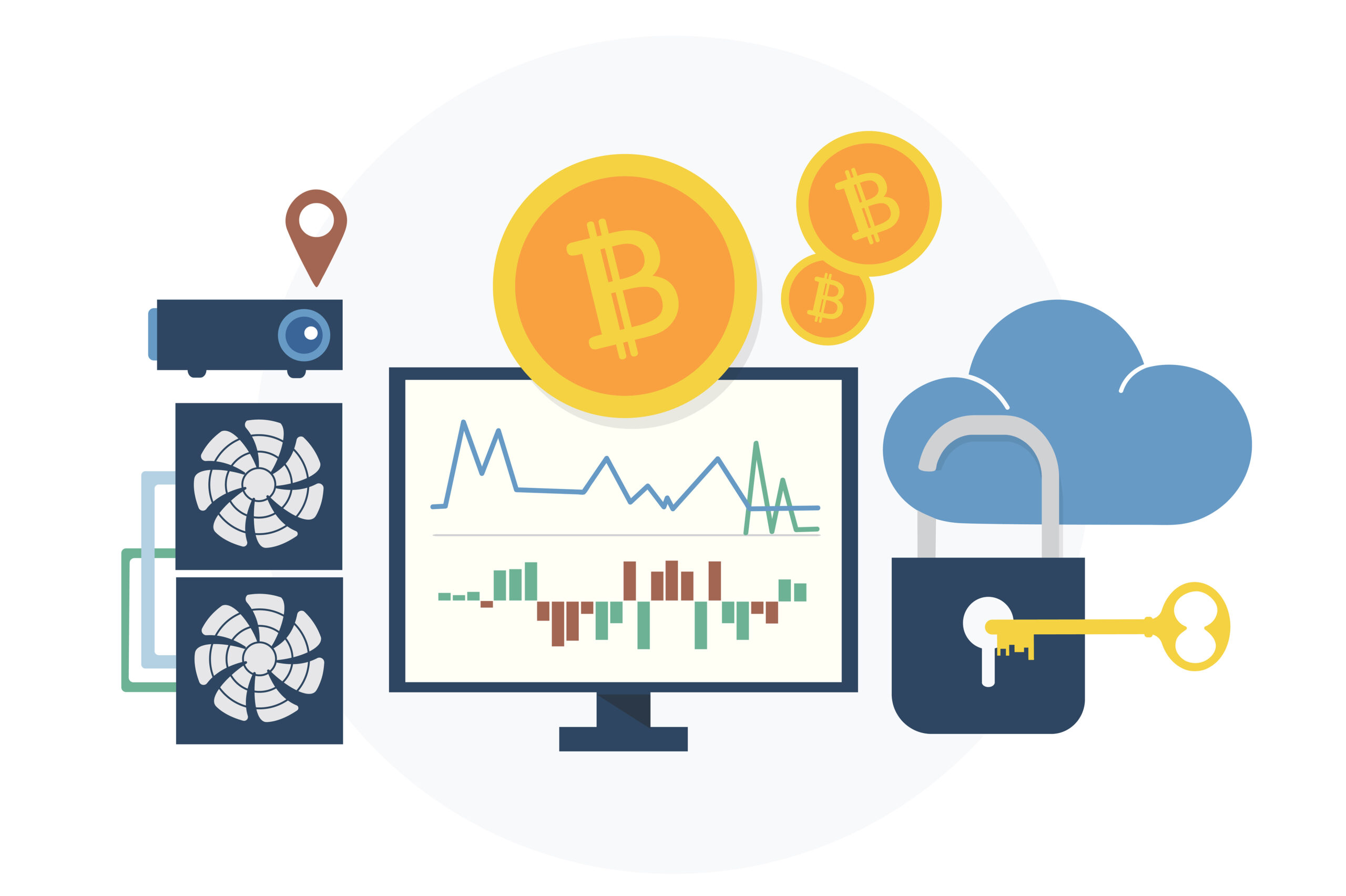Cryptocurrencies—digital assets—are fast becoming the global norm, prompting an overflow of market participants in the space. Furthermore, it is an overwhelming field of knowledge. However, just like every concept, you can master the world of digital assets and blockchains. Are you finding it tough to figure out your way in the cryptosphere? Begin with these crypto terms!

1. Blockchain
The term “blockchain” comes from the arrangement of blocks of transactions or information to form a chain. Similar to a traditional transaction ledger, the blockchain is an unchangeable digital ledger.
Blockchains record the transactions and information on their network. Different computers assess and confirm these records in what is known as a peer-to-peer (p2p) network. After confirmation, the records are assigned a date and time stamp and added to the chain of blocks. Because of the p2p network used to confirm blocks, it is difficult for a single entity to alter or remove already confirmed records.
2. Consensus Algorithm
This is a fault-tolerant mechanism (it will keep operating even if one or more components fail) used to confirm, assess, or reach a consensus on data values among decentralized or distributed systems. This algorithm helps network participants agree on the value of data or the state of the network. Some popular consensus mechanisms in blockchain are proof of work (PoW), proof of authority (PoA), and proof of stake (PoS). All these algorithms—whether they use miners, delegators, or contributors and require mining rigs, space, or votes—allow the blockchain to confirm and validate information and transactions without intermediaries.
3. Decentralization
Decentralization involves transferring the control and decision-making process of a project, activity, or blockchain from a central governing body to several network nodes or participants. Usually, centralized, distributed, and decentralized network architectures are employed when building blockchains. Naturally, blockchains are distributed, as various parties have copies of or have access to the data. However, not all blockchains are decentralized.
The bitcoin blockchain, for instance, is decentralized; when a new transaction occurs and a new block has to be added to bitcoin’s chain, it is verified by a decentralized network of computers, not a single body. Meanwhile, the ripple blockchain is argued to be centralized because it relies on a small, known network of nodes for validation.
4. Decentralized Autonomous Organization (DAO)
A DAO is an organization with no central governing body or authority. If you are a member of a DAO, you can vote on the organization’s initiatives and own tokens of the DAO.
DAOs are governed by smart contracts that outline operations and codes of conduct.
5. Smart Contract
Smart contracts are codes, software, or programs on blockchains that execute when predetermined requirements are fulfilled. These programs allow network participants to enter agreements securely without an intermediary.
6. Coin
A coin is a single unit of a currency that you can exchange based on agreed-upon values and current market conditions. It is basically a medium of exchange or a store of value within a digital financial network.
7. Fiat
This is a legal tender of currency issued by a government. The US Dollar, Euro, and Naira are common examples of fiat money.
8. Bitcoin
Bitcoin (BTC), is the first cryptocurrency. It is a form of digital currency running on a blockchain and operates independently of a centralized financial institution. BTC is implemented by a protocol or blockchain, also known as bitcoin.
9. Altcoin
The term “altcoins” refers to all crypto assets apart from bitcoin. Popular altcoins are Ethereum (ETH), Solano (SOL), and Algorand (ALGO).
10. Stablecoin
Stablecoins are digital currencies pegged or tied to other assets, including fiat money, other cryptocurrencies, and commodities. These digital assets offer the stability missing from most cryptocurrencies. Furthermore, many popular cryptocurrencies are volatile, with prices going up or down frequently and unpredictably. A popular stablecoin is Tether USDT.
11. Token
Tokens are units of value that are recorded on blockchains. You can use these tokens as digital currencies to encode data that is unique (as is obtainable with non-fungible tokens) or exchange them for off-chain assets (assets not represented or recorded on the blockchain.
Some tokens are utility tokens used to pay for goods and services or settle transaction fees. Others are known as security tokens, used to represent financial assets.
Additionally, tokens can be fungible or non-fungible. A fungible token can be replaced by another token and still maintain its value. However, a non-fungible token cannot be replaced with another token. You can swap a dollar bill or BTC token with another dollar bill or BTC token and maintain the same value, but you can’t swap a painting with another and obtain the exact value.
12. NFTs
Non-fungible tokens (NFTs) are digital assets recorded or maintained on the blockchain. You can use any art, tweet, memorabilia, or unique design to create an NFT. Although they are one-of-a-kind digital assets, they can be sold or bought just like other assets.
13. Coin Offering (ICO, IEO, STO, CTO)
There are several methods crypto projects employ to offer their coins to investors or interested parties. One common method is an initial coin offering (ICO). An ICO is like an initial public offering (IPO) because the crypto startup sells its network tokens to raise funds for creating new coins, services, or apps. The sold tokens may be utility or financial tokens. However, the US Securities and Exchange Commission (SEC) announced that ICOs are risky.
Another coin offering method is the initial exchange offering (IEO), an expansion of the ICO. In an IEO, exchanges are deployed to conduct the token sales.
The security token offering (STO), also similar to the ICO, is used to offer security tokens. These sales are investment contracts regulated by securities laws, hence the method’s name.
Consumer token offerings (CTOs) involve the sale of tokens that customers can use to purchase goods, services, and materials within the crypto project. Consumer tokens are not designed for trading, so they do not require regulation from the SEC and other regulators.
14. Decentralized Applications (dApps)
dApps are programs or applications based on the blockchain or other peer-to-peer (P2P) systems, providing utility to users. dApps usually use smart contracts to run independently of a central body.
15. Decentralized Finance (DeFi)
This refers to finance services carried out in a decentralized manner, that is, on a decentralized blockchain using P2P networks and smart contracts without a central authority.
16. Centralized Finance (CeFi)
CeFi refers to financial services carried out on a blockchain using a centralized institution—confirmed and implemented by a central authority. However, traditional financial systems do not apply here as it runs on the blockchain, and the transactions are secure, transparent, and unchangeable.
17. Crypto Exchange
Cryptocurrency exchanges are businesses that allow you to exchange cryptocurrencies and digital assets for other cryptocurrencies, fiat monies, or financial assets. One of the best cryptocurrency exchanges available is the MEXC exchange.
Note that there are centralized exchanges (CEXs) and decentralized exchanges (DEXs). Check out the pros and cons of CEXs and DEXs.
18. HODL
HODL represents “hold on for dear life”. It is a terminology that encourages digital asset investors not to sell off their assets when prices plunge. This crypto term means that you should buy and hold for a long time, especially if you’re a beginner trader unable to capitalize on price swings.
19. Minting
The creation process in the crypto space is known as minting. When you mint crypto, you are creating new coins on the blockchain. Similarly, when you mint NFTs, you create tokens—based on unique items—held on the blockchain.
20. P2P
Peer-to-peer (P2P) is a way to communicate that doesn’t involve a central server. Each party (called a “peer”) has the same rights and abilities and can start a communication session.
21. Cryptocurrency Wallet
A crypto wallet is a program, device, or service that stores cryptocurrency transaction keys: public and private. You can also use crypto wallets to sign or encrypt information.
Because cryptocurrencies are digital assets instead of physical assets, they do not exist physically on any device. Therefore, crypto assets are linked to a set of public and private keys; you can control tokens associated with your keys.
Wallets could be custodial or non-custodial and hot or cold; you have to do extensive research to select the best wallet for you.
22. Public Key
Your public key functions similarly to your bank account number. A trusted authority or program assigns it to you, and everyone can access it through a public repository.
When you use your wallet for the first time, you will create public and private keys. The public key encrypts data so that only the private key can decrypt it. You can send or receive tokens via your public key, but you need your private key to prove the tokens’ ownership and unlock them.
You’ll receive a public key address—a shortened version of your public key—to receive tokens.
23. Private Key
Private keys decrypt data and facilitate transactions. You should be the only one with access to your private key. If you lose your public key, you can generate a new one with your private key; however, if you lose your private key, you can’t generate a new one and access your tokens.
Private keys are large numerical values that come in the form of QR codes, mnemonic phrases, 64-digit hexadecimal codes, or 256-character long binary codes. Typically, crypto wallets offer you a seed phrase to unlock your private key when you lose access to it.
24. Metaverse
Ever since Neal Stephenson coined the term “metaverse” in 1992, several organizations have strived to make it a reality. The idea behind the metaverse is one in which we are alive on the internet and computing platforms instead of only viewing them.
In the metaverse, we expect to experience life in ways we can’t live in the physical world. And although we are a long way from this reality, several relevant technologies—augmented reality (AR) glasses and virtual reality (VR) headsets—have massively evolved.
25. On-Chain and Off-Chain
A transaction or information is on-chain when it is processed or stored on a blockchain. In contrast, off-chain transactions or storage happens off the blockchain and is later recorded. An example of off-chain activities is peer-to-peer (P2P) trading, where users exchange tokens directly and via bank transfers, PayPal, and other off-chain payment options.
26. Tokenomics
Tokenomics is short for “token economics.” It is the study and explanation of the features of tokens in relation to economic value creation. Tokenomics examines a proposed token’s use cases and values to understand its likely supply and demand.
27. Web3
Gavin Wood, the founder of Polkadot, coined the term “Web3” in 2014 to describe a decentralized complex network established on the blockchain. The community hopes that in Web3, also called Web 3.0, users will have access and control over their data instead of big tech companies.
28. Fear of Missing Out (FOMO)
This coinage refers to a feeling of fear or regret of missing a believed bullish investment opportunity due to an unexpected, sudden asset price hike. FOMO can also refer to a situation where an investor makes an irrational investment decision to avoid feeling the regret of missing out.
29. Liquidity
When a market is liquid, there is a high volume of trading activity. As a result, market participants can easily sell their assets without affecting the token’s price.
30. All-Time High (ATH)
ATH depicts the highest-ever price of a digital asset on an exchange or in the crypto market. ATHs usually occur during bull markets, when the crypto market experiences extreme price hikes and growth.
31. All-Time Low (ATL)
ATL is the lowest-ever price of a digital asset on an exchange or in the crypto market. ATLs usually occur during bear markets, when the crypto market experiences severe price plunges and declines.
32. Volatility
Whether you are a beginner trader or an advanced investor, you’ve probably heard that the crypto market is volatile. What does this mean? The prices of crypto assets tend to fluctuate regularly and severely, with unexpected significant price pumps and drops over short periods.
Crypto assets are more volatile than most other assets, largely because they have a small market size and are unregulated and digital.
33. Whitepaper
Whitepapers comprehensively outline the tokenomics and technical characteristics of cryptocurrencies. The development team of the crypto asset will usually write the documents and serve as a guide for potential users, investors, and network participants.
34. Pump and Dump
In a pump and dump, a fraudulent party buys a massive amount of a digital asset and hypes it with misleading information so that unsuspecting investors can buy the asset and increase its value. After the asset’s value has been sufficiently pumped, the fraudulent party sells its holding of the asset. They will dump it into the market at a higher price and cause a severe crash in the asset’s value. Ultimately, the scammer gains big, and the unsuspecting investors lose.
A great way to avoid pump-and-dump scams is to invest only in popularly-adopted crypto assets, such as Bitcoin (BTC), Cardano (ADA), and Dogecoin (DOGE), and use only popularly-accepted exchanges like MEXC. Additionally, ensure you conduct extensive research (read whitepapers) to determine the team and the token’s purpose before investing in any project.
35. Crypto Whales
Crypto whales are organizations or individuals who hold large amounts of digital assets; they usually significantly affect market prices if they sell the tokens they hold. A good example is FTT’s decline after Binance chose to dump its FTT holdings.
Immerse Yourself in Crypto
As a new—or existing—crypto participant, the flood of terms might appear frightening. However, with more time spent trading or learning, you can become a cryptocurrency pro in no time.
Personal Note From MEXC Team
Check out our MEXC trading page and find out what we have to offer! You can learn more about crypto industry news. There are also a ton of interesting articles to get you up to speed with the crypto world. Happy trading!
Join MEXC and Start Trading Today!



